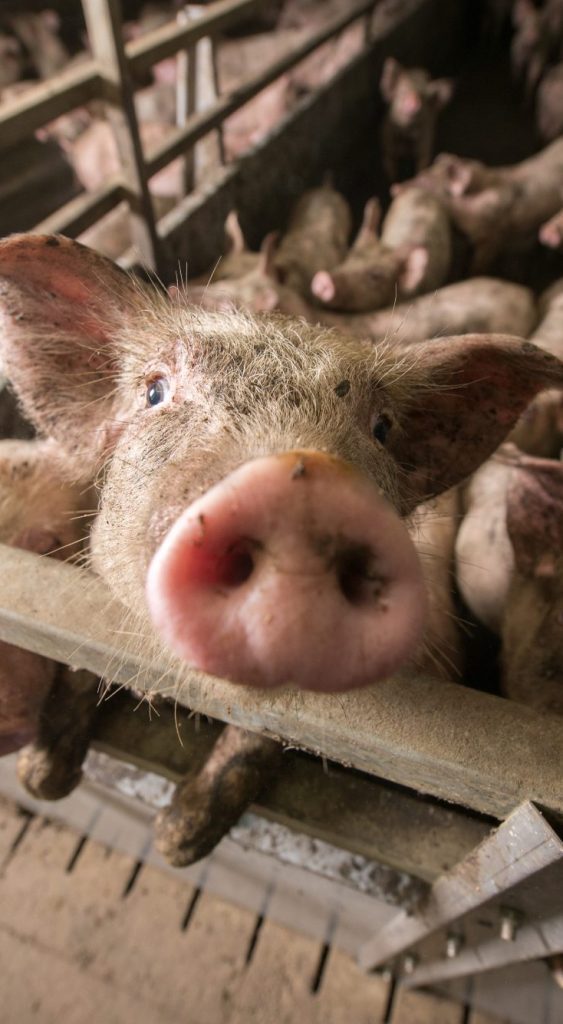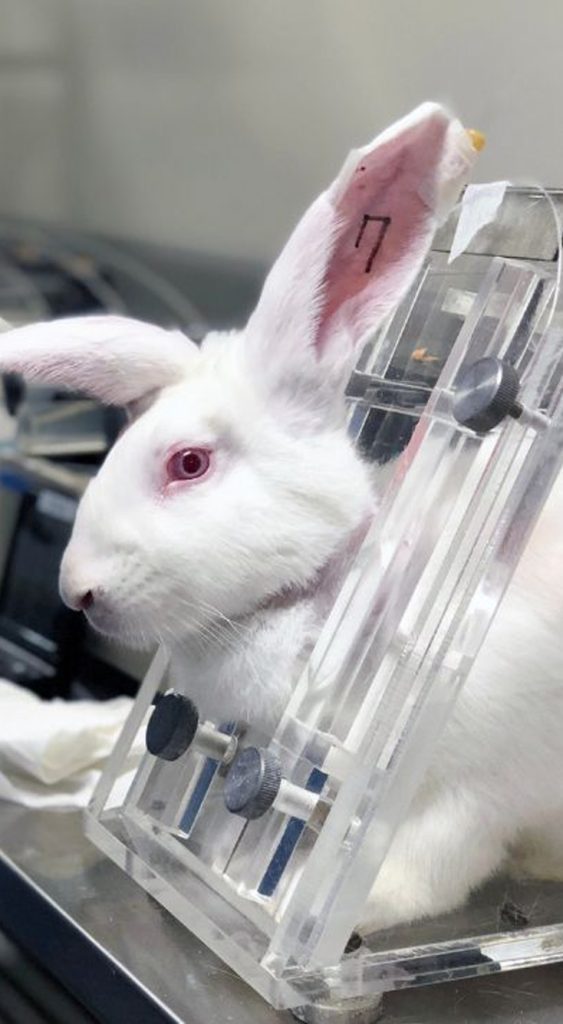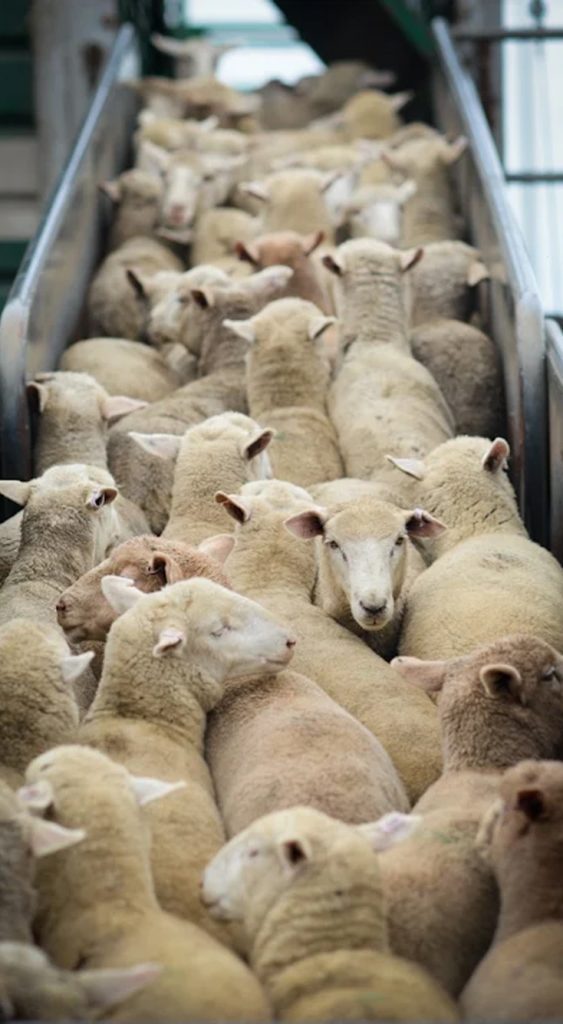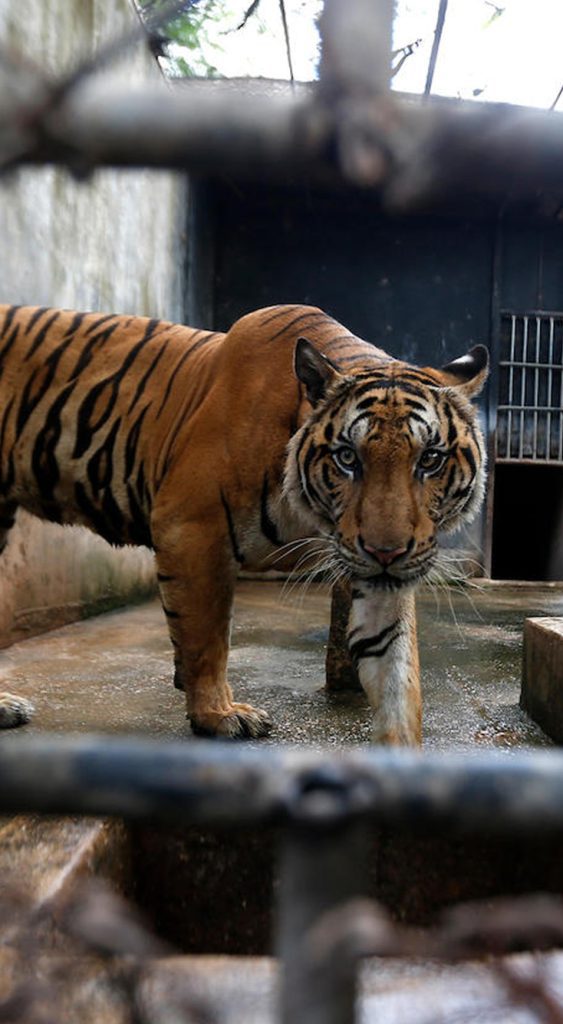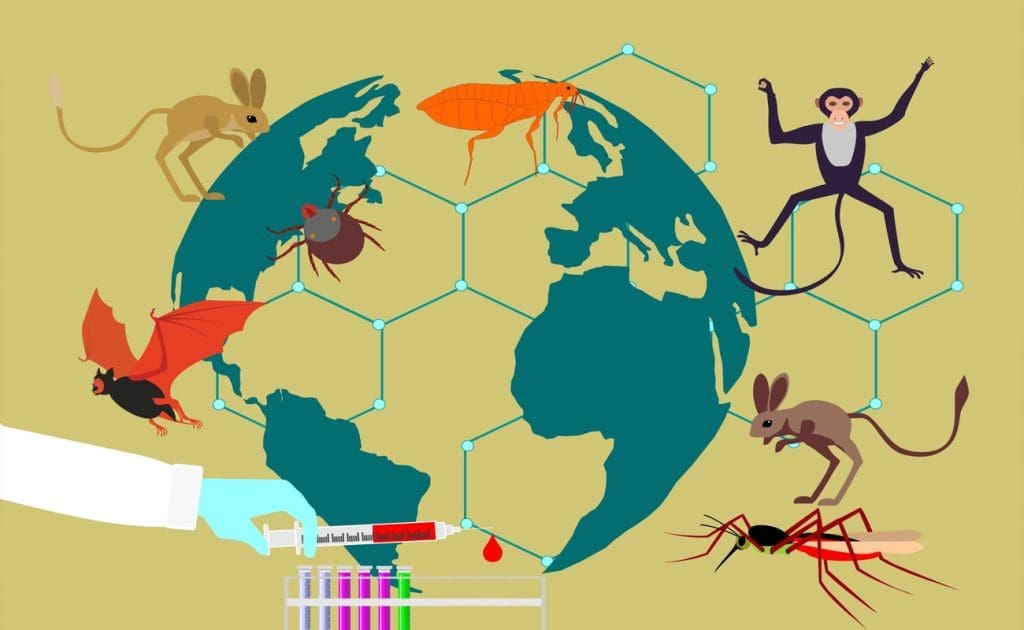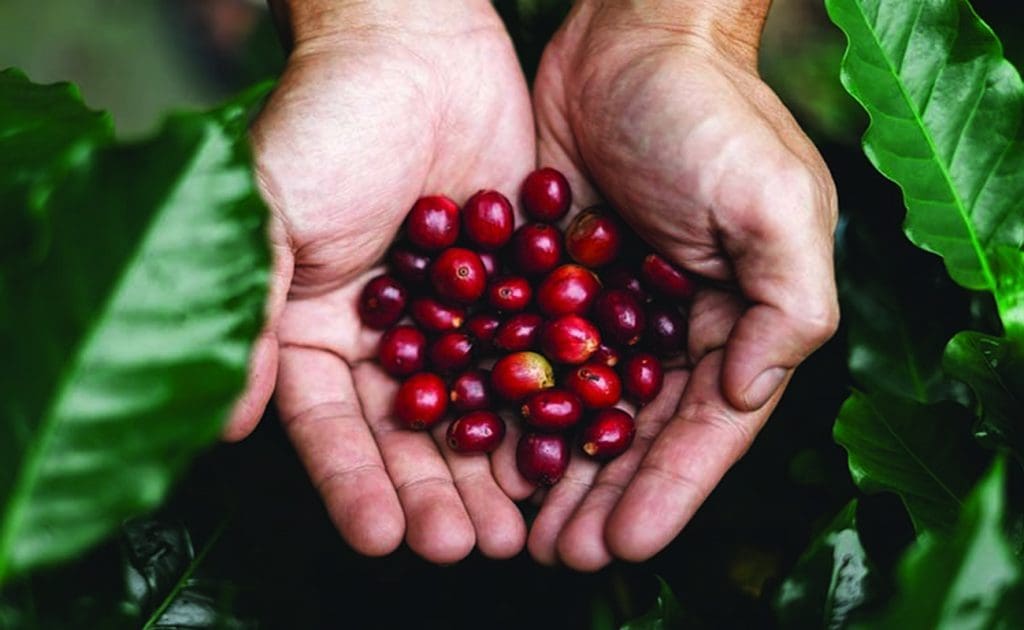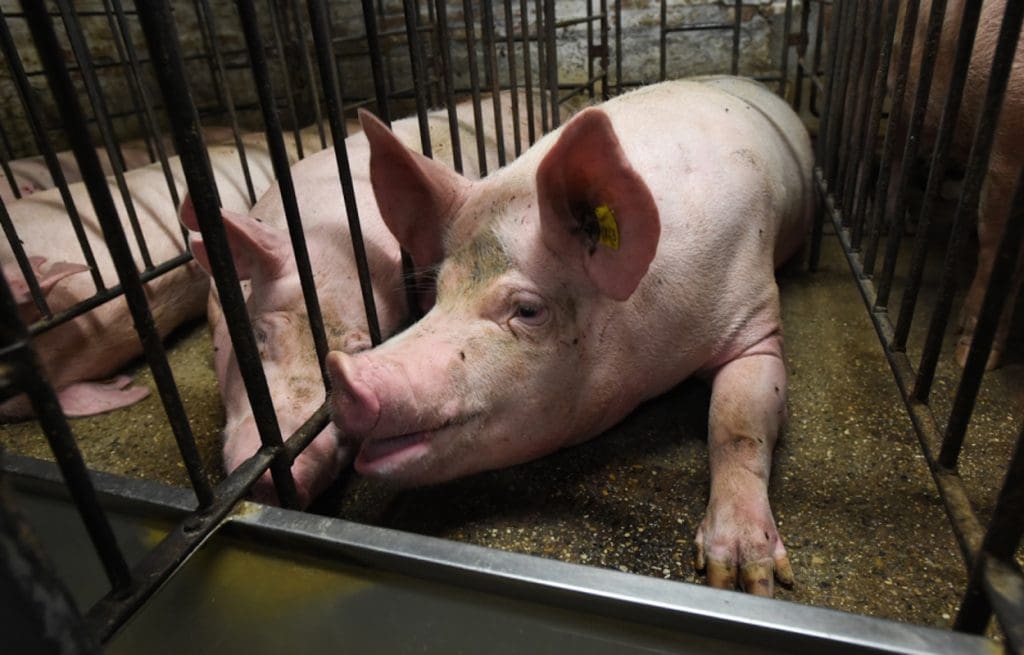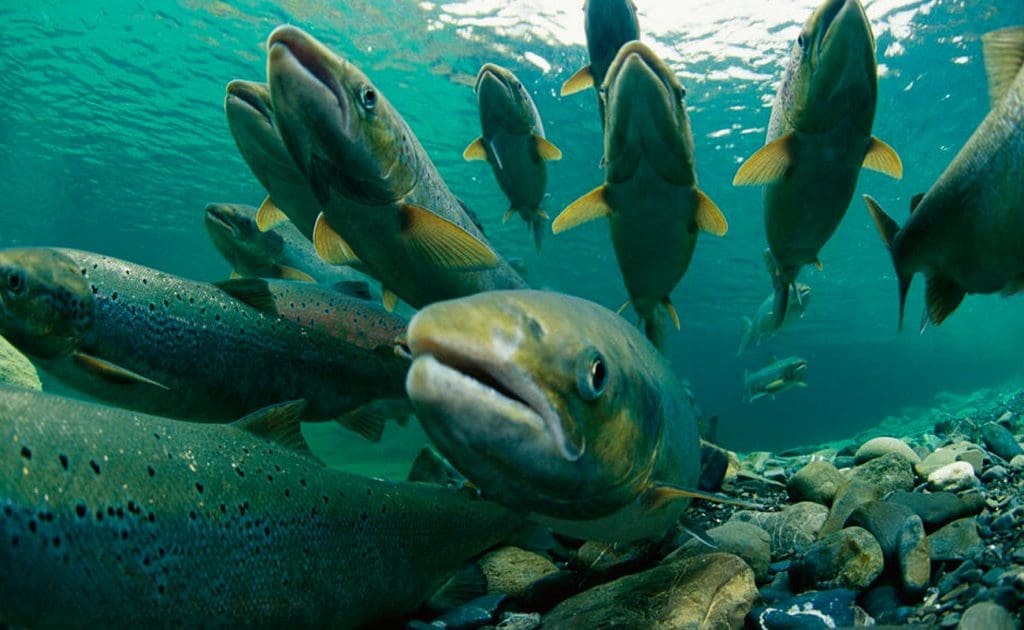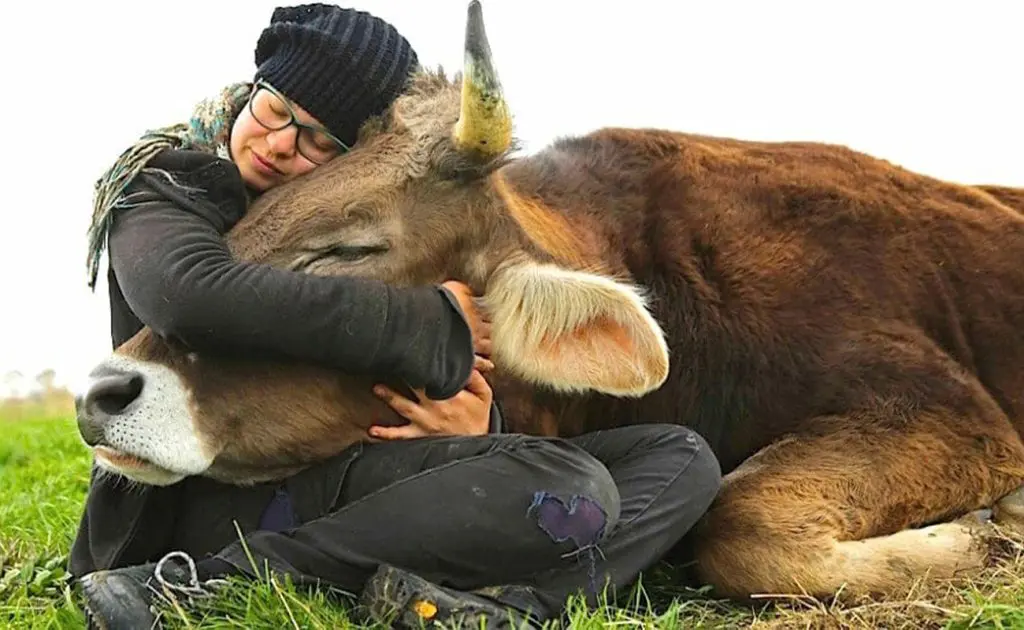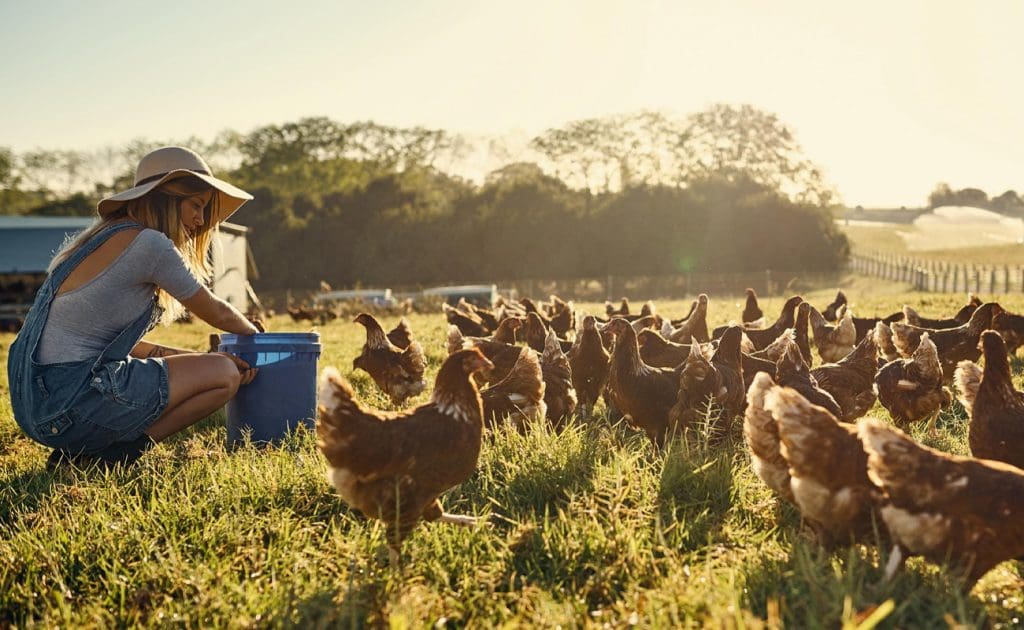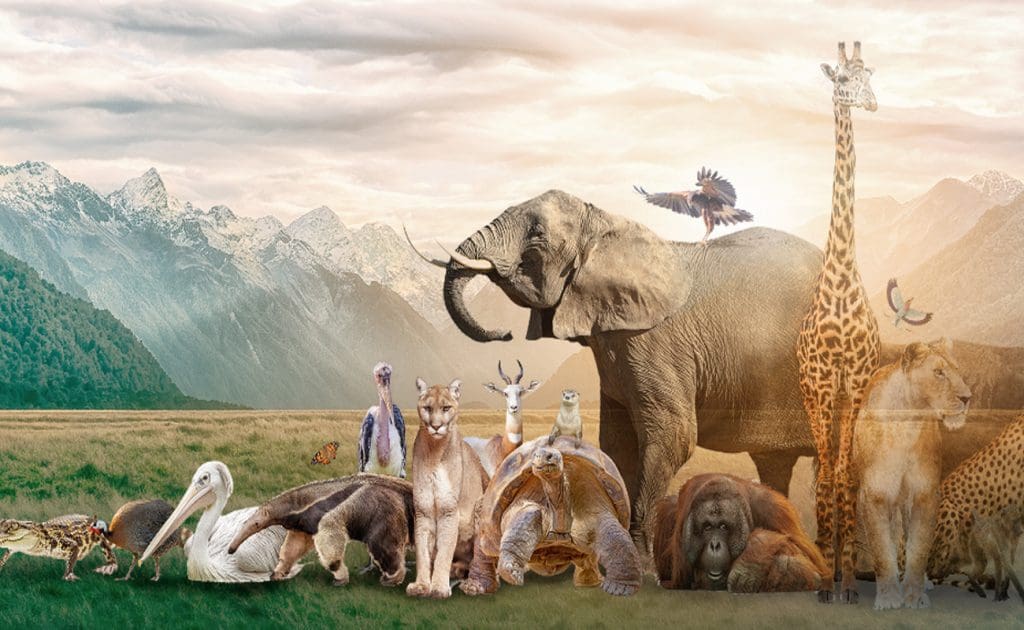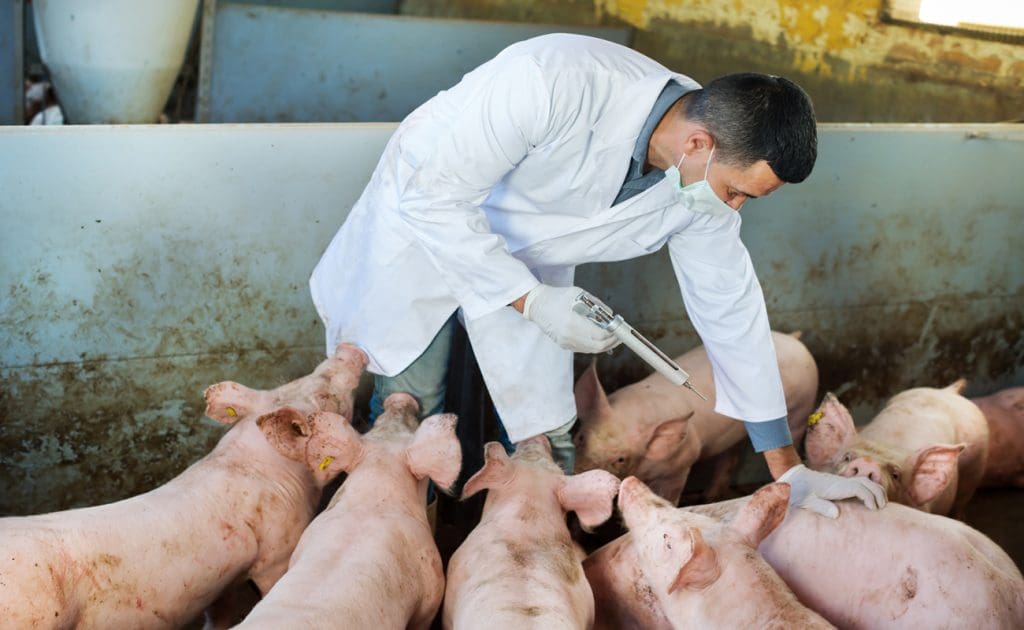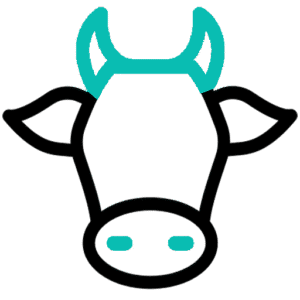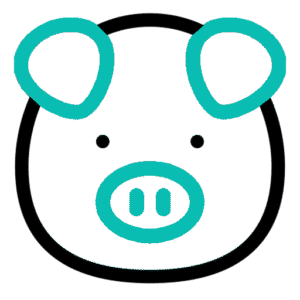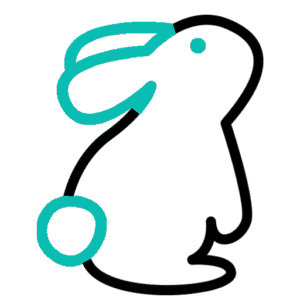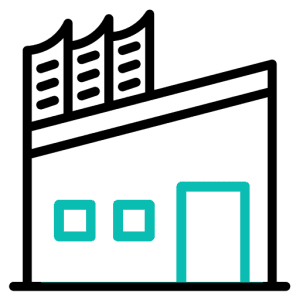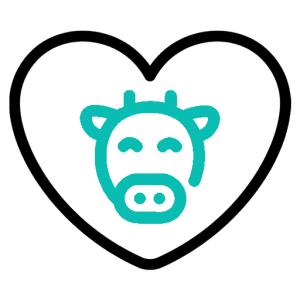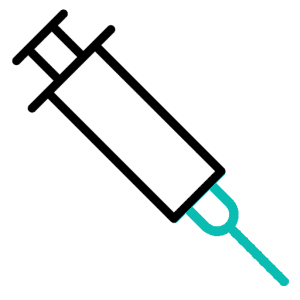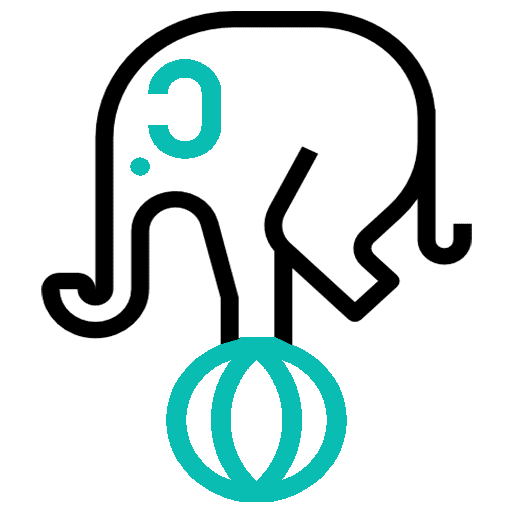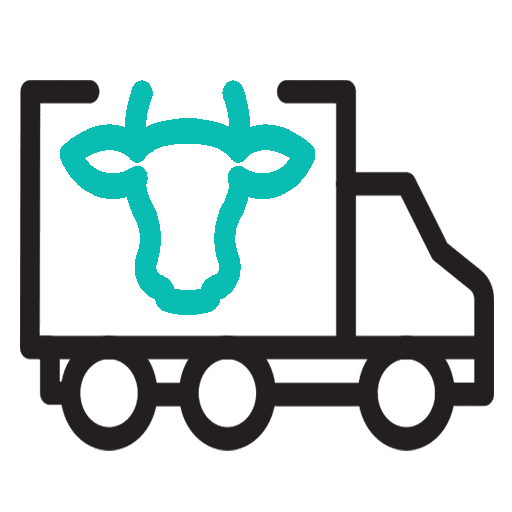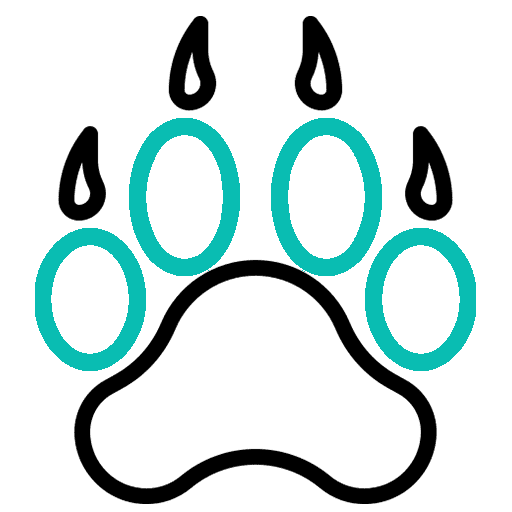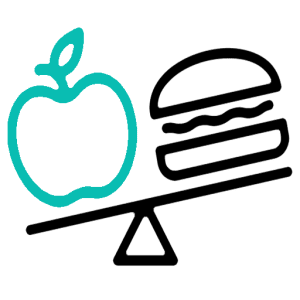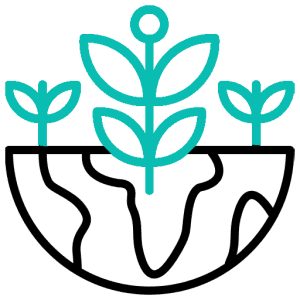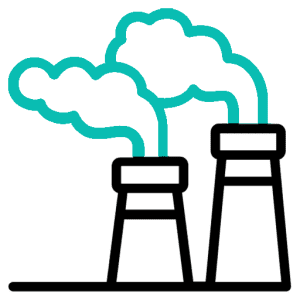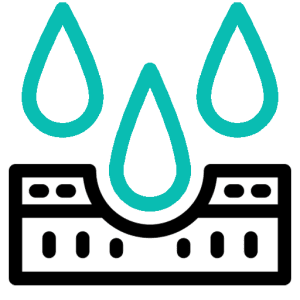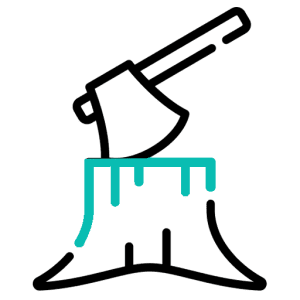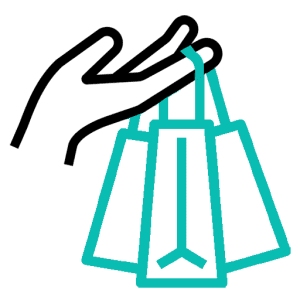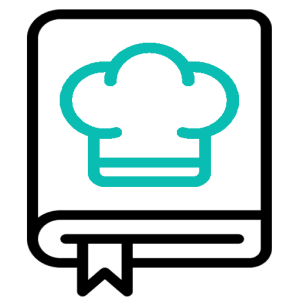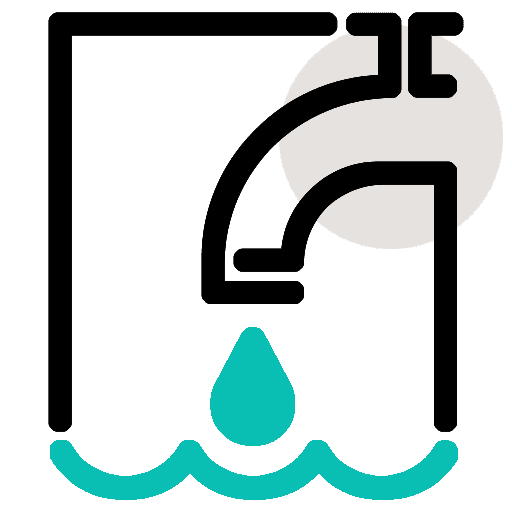
Familles brisées
des litres d'eau sont nécessaires pour produire un seul kilogramme de boeuf — un exemple frappant de la façon dont l'élevage industriel consomme un tiers de l'eau douce de la planète. [1]

80%
de la déforestation en Amazonie est causée par l'élevage de bétail — le principal coupable derrière la destruction de la plus grande forêt tropicale du monde. [2]
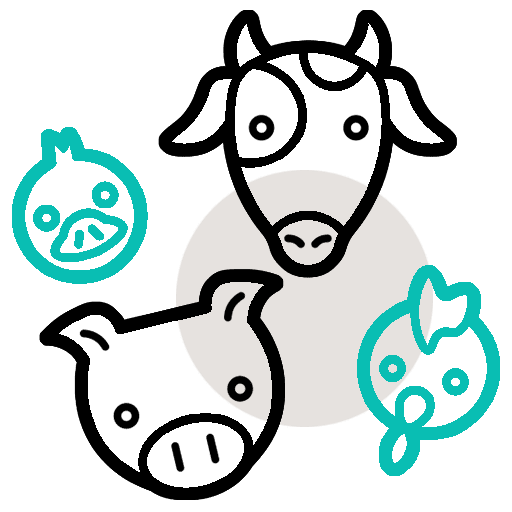
77%
des terres agricoles mondiales sont utilisées pour le bétail et l'alimentation animale — et pourtant, cela ne fournit que 18 % des calories mondiales et 37 % de ses protéines. [3]

Gaz à effet de serre
L'agriculture animale industrielle produit plus de gaz à effet de serre que l'ensemble du secteur des transports mondiaux combinés. [4]

Vaches
des animaux terrestres dans le monde sont tués pour la nourriture chaque année — et 99 % d'entre eux subissent une vie dans des fermes industrielles. [5]

400+ types
de gaz toxiques et plus de 300 millions de tonnes de fumier sont générés par les fermes industrielles, empoisonnant notre air et notre eau. [6]

Dindes
de tonnes de céréales sont données au bétail chaque année — de quoi mettre fin à la faim dans le monde plusieurs fois. [7]

37%
des émissions de méthane proviennent de l'élevage industriel — un gaz à effet de serre 80 fois plus puissant que le CO₂, aggravant le dérèglement climatique. [8]
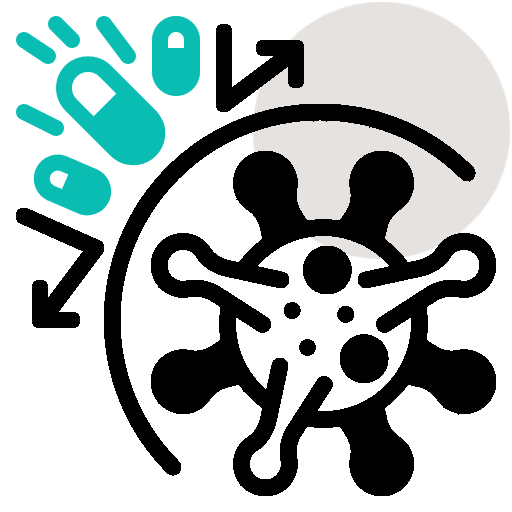
80%
d'antibiotiques dans le monde sont utilisés dans les animaux d'élevage industriel, alimentant la résistance aux antibiotiques. [9]

1 048 millions de tonnes
de animaux marins sont tués chaque année par la pêche et l'aquaculture — la plupart ne sont même pas comptés dans les statistiques de l'agriculture animale. [10]

60%
des pertes de biodiversité mondiale sont liées à la production alimentaire. spoiler: non — avec l'agriculture animale comme principal moteur. [11]

75%
des terres agricoles mondiales pourraient être libérées si le monde adoptait des régimes à base de plantes — libérant une superficie de la taille des États-Unis, de la Chine et de l'Union européenne combinés. [12]

92 milliards
La meilleure chose que nous puissions faire est de changer notre façon de manger. Un régime à base de plantes est un choix plus compatissant pour notre planète et les diverses espèces avec lesquelles nous coexistons.

Sauver la Terre
L'agriculture animale est la principale cause de la perte de biodiversité et de l'extinction des espèces à l'échelle mondiale, posant une menace grave pour nos écosystèmes.
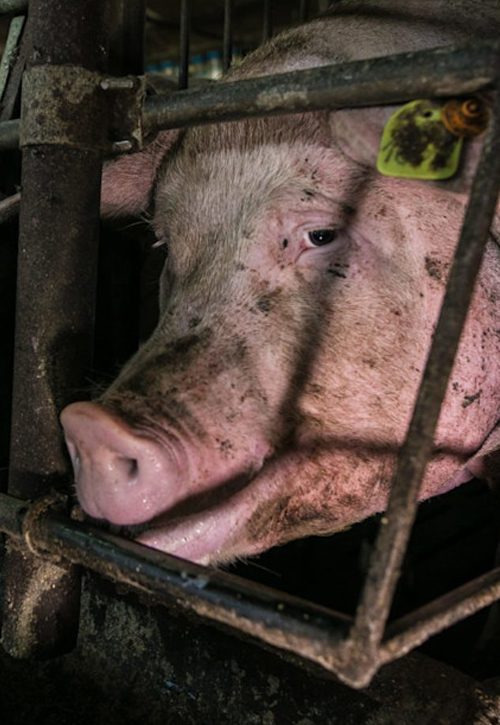
Mettez fin à leurs souffrances
L'élevage industriel repose fortement sur la demande des consommateurs pour les produits carnés et dérivés animaux. Chaque repas à base de plantes contribue à libérer les animaux des systèmes de cruauté et d'exploitation.

Prospérez avec les Plantes
Les aliments à base de plantes sont non seulement savoureux, mais également riches en vitamines et minéraux essentiels qui améliorent l'énergie et favorisent le bien-être général. Adopter un régime riche en plantes est une stratégie efficace pour prévenir les maladies chroniques et soutenir la santé à long terme.
Cruauté de l'élevage industriel :
Là où les animaux souffrent en silence, nous devenons leur voix.
Souffrance Animale dans l'Agriculture
Partout où les animaux sont blessés ou où leurs voix ne sont pas entendues, nous intervenons pour confronter la cruauté et défendre la compassion. Nous travaillons sans relâche pour exposer l'injustice, susciter un changement durable et protéger les animaux partout où leur bien-être est menacé.
La Crise
La Vérité Derrière Nos Industries Alimentaires
La vérité derrière nos industries alimentaires révèle une réalité cachée de la cruauté de l'élevage industriel, où des milliards d'animaux subissent d'immenses souffrances chaque année. Au-delà de l'impact sur le bien-être animal, l'élevage industriel cause également de graves dommages environnementaux, du changement climatique à la perte de biodiversité. Dans le même temps, le système contribue à l'augmentation des risques pour la santé, notamment l'obésité, le diabète et les maladies cardiaques. Choisir un régime alimentaire à base de plantes et adopter des habitudes de vie durables offre une solution puissante — réduisant la souffrance animale, protégeant la planète et améliorant la santé humaine.
L'INDUSTRIE DE LA VIANDE
ANIMAUX TUÉS POUR LA VIANDE
Les animaux tués pour leur viande commencent à souffrir dès leur naissance. L'industrie de la viande est liée à certaines des pratiques de traitement les plus sévères et inhumaines.
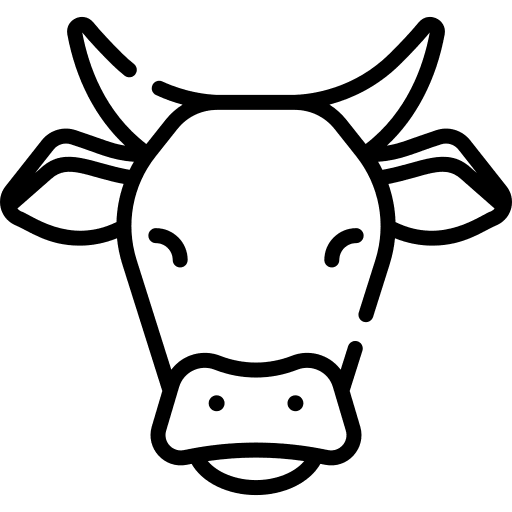
Impact environnemental de la viande
Nés dans la souffrance, les vaches endurent la peur, l'isolement et des procédures brutales comme le retrait des cornes et la castration — bien avant que l'abattage ne commence.
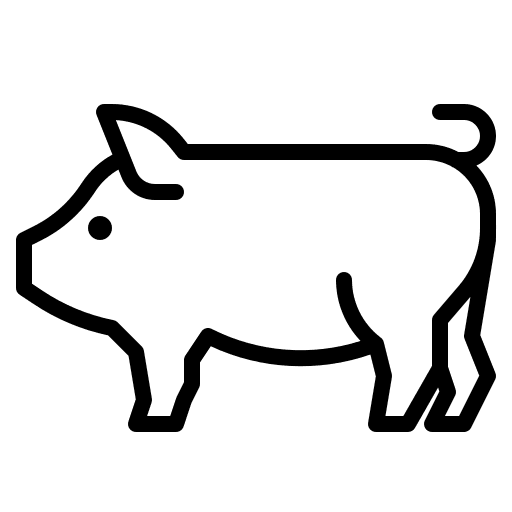
Porcs
Les porcs, plus intelligents que les chiens, passent leur vie dans des fermes exiguës et sans fenêtres. Les truies souffrent le plus — constamment engrossées et confinées dans des cages si petites qu'elles ne peuvent même pas se retourner pour réconforter leurs petits.
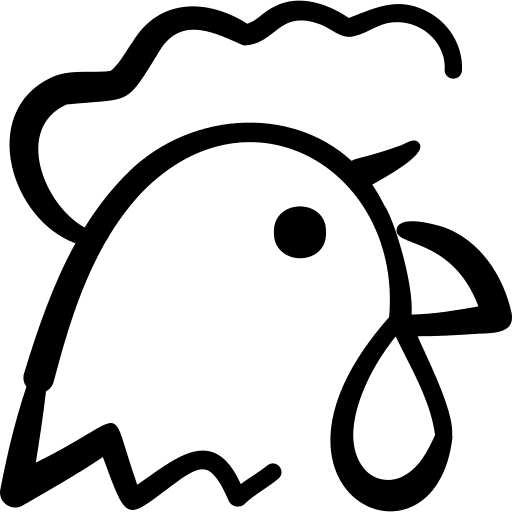
Poules
Les poules subissent le pire de l'élevage industriel. Entassées par milliers dans des hangars insalubres, elles sont sélectionnées pour grandir si vite que leur corps ne peut suivre — ce qui entraîne des difformités douloureuses et une mort précoce. La plupart sont tuées à seulement six semaines.
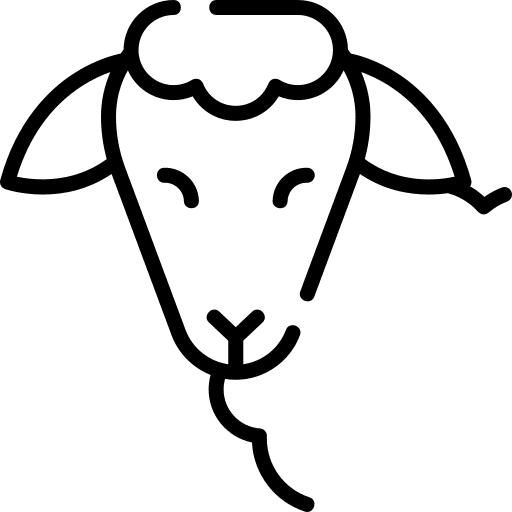
La vérité derrière nos industries alimentaires
Les agneaux subissent des mutilations douloureuses et sont arrachés à leurs mères quelques jours seulement après la naissance — tout cela pour la viande. Leur souffrance commence beaucoup trop tôt et se termine beaucoup trop tôt.

Lapins
Les lapins subissent des abattages brutaux sans protection légale — beaucoup sont battus, maltraités et ont la gorge tranchée alors qu'ils sont encore conscients. Leur agonie silencieuse passe souvent inaperçue.

Ce que nous faisons
Chaque année, des millions de dindes subissent des morts cruelles, beaucoup mourant de stress pendant le transport ou même étant ébouillantées vivantes dans les abattoirs. Malgré leur intelligence et leurs liens familiaux forts, elles souffrent silencieusement et en grand nombre.
AU-DELÀ DE LA CRUAUTÉ
L'industrie de la viande nuit à la fois à la planète et à notre santé.
15 000 litres
Élever des animaux pour se nourrir consomme d'énormes quantités de terres, d'eau, d'énergie et cause d'importants dégâts environnementaux. La FAO de l'ONU affirme que réduire la consommation de produits animaux est essentiel pour lutter contre le changement climatique, car l'élevage représente près de 15 % des émissions mondiales de gaz à effet de serre. Les élevages industriels gaspillent également d'énormes ressources en eau — pour l'alimentation, le nettoyage et la boisson — tout en polluant plus de 56 000 kilomètres de voies navigables aux États-Unis.
Le coût environnemental des produits laitiers
Consommer des produits animaux augmente le risque de problèmes de santé graves. L'OMS classe la viande transformée comme cancérigène, augmentant le risque de cancer du côlon et du rectum de 18 %. Les produits animaux sont riches en graisses saturées liées aux maladies cardiaques, aux accidents vasculaires cérébraux, au diabète et au cancer — principales causes de décès aux États-Unis. Des études montrent que les végétariens vivent plus longtemps ; une étude a révélé qu'ils étaient 12 % moins susceptibles de mourir en six ans comparés aux consommateurs de viande.
L'INDUSTRIE LAITIÈRE
LE SECRET OMBRÉ DU LAIT
Derrière chaque verre de lait se cache un cycle de souffrance — les vaches mères sont constamment engrossées, puis leurs veaux leur sont enlevés pour que leur lait soit récolté pour les humains.
Agneaux
Dans les fermes laitières, les mères pleurent leurs veaux lorsqu'ils sont emmenés — pour que le lait destiné à eux puisse être mis en bouteille pour nous.
Confiné Seul
Les veaux, arrachés à leur mère, passent leurs premiers jours dans un isolement glacial. Leurs mères restent attachées dans des stalles exiguës, endurant des années de souffrance silencieuse — juste pour produire du lait qui n'est pas destiné à l'homme.
Risques pour la santé
De la douleur cuisante du marquage au supplice de l'écornage et de la coupe de la queue — ces procédures violentes sont effectuées sans anesthésie, laissant les vaches marquées, terrorisées et brisées.
Tués brutalement
Les vaches élevées pour le lait subissent une fin cruelle, abattues beaucoup trop jeunes une fois qu'elles ne produisent plus de lait. Beaucoup endurent des voyages douloureux et restent conscientes pendant l'abattage, leur souffrance cachée derrière les murs de l'industrie.
AU-DELÀ DE LA CRUAUTÉ
Les produits laitiers cruels nuisent à l'environnement et à notre santé.
1 à 2,8 billions
L'élevage laitier libère de grandes quantités de méthane, d'oxyde nitreux et de dioxyde de carbone — des gaz à effet de serre puissants qui nuisent à l'atmosphère. Cela entraîne également la déforestation en convertissant les habitats naturels en terres agricoles et pollue les sources d'eau locales par une mauvaise gestion du fumier et des engrais.
Le coût environnemental des produits laitiers
La consommation de produits laitiers est liée à des risques plus élevés de problèmes de santé graves, notamment les cancers du sein et de la prostate, en raison des niveaux élevés de facteur de croissance analogue à l'insuline dans le lait. Bien que le calcium soit essentiel pour des os solides, les produits laitiers ne sont pas la seule ou la meilleure source ; les légumes-feuilles et les boissons à base de plantes enrichies offrent des alternatives sans cruauté et plus saines.
L'INDUSTRIE DES ŒUFS
LA VIE D'UNE POULE EN CAGE
Les poules sont des animaux sociaux qui aiment chercher leur nourriture et prendre soin de leurs familles, mais elles passent jusqu'à deux ans enfermées dans de minuscules cages, incapables d'étendre leurs ailes ou de se comporter naturellement.
34 heures de souffrance : Le vrai coût d'un œuf
Abattage de poussins mâles
Les poussins mâles, incapables de pondre des œufs ou de grandir comme les poulets de chair, sont considérés comme sans valeur par l'industrie des œufs. Immédiatement après l'éclosion, ils sont séparés des femelles et cruellement tués — soit étouffés, soit broyés vivants dans des machines industrielles.
Confinement Intensif
Aux États-Unis, près de 75 % des poules sont entassées dans de minuscules cages en fil de fer, chacune avec moins d'espace qu'une feuille de papier d'imprimante. Obligées de se tenir debout sur des fils durs qui blessent leurs pieds, de nombreuses poules souffrent et meurent dans ces cages, parfois laissées à pourrir parmi les vivants.
Mutilations Cruelles
Les poules de l'industrie des œufs subissent un stress sévère dû à un confinement extrême, entraînant des comportements nuisibles comme l'automutilation et le cannibalisme. En conséquence, les travailleurs coupent une partie de leurs becs sensibles sans analgésiques.
AU-DELÀ DE LA CRUAUTÉ
L'industrie des œufs nuit à notre santé et à l'environnement.
Les œufs et l'environnement
La production d'œufs nuit considérablement à l'environnement. Chaque œuf consommé génère une demi-livre de gaz à effet de serre, notamment de l'ammoniac et du dioxyde de carbone. De plus, de grandes quantités de pesticides utilisés dans l'élevage de poulets polluent les voies navigables locales et l'air, contribuant à des dommages environnementaux généralisés.
Le coût environnemental des produits laitiers
Les œufs peuvent contenir des bactéries Salmonella nocives, même lorsqu'ils ont l'air normaux, provoquant des symptômes de maladie comme la diarrhée, la fièvre, les douleurs abdominales, les maux de tête, les nausées et les vomissements. Les œufs issus de l'élevage industriel proviennent souvent de poules élevées dans de mauvaises conditions et peuvent contenir des antibiotiques et des hormones qui présentent des risques pour la santé. De plus, la teneur élevée en cholestérol des œufs peut contribuer aux problèmes cardiaques et vasculaires chez certaines personnes.
L'INDUSTRIE DE LA PÊCHE
L'INDUSTRIE DE LA POISSON DÉVASTATRICE
Les poissons ressentent la douleur et méritent une protection, mais n'ont aucun droit légal dans l'élevage ou la pêche. Malgré leur nature sociale et leur capacité à ressentir la douleur, ils sont traités comme de simples marchandises.
Fermes piscicoles industrielles
La plupart des poissons consommés aujourd'hui sont élevés dans des aquacultures intérieures ou océaniques surpeuplées, confinés toute leur vie dans des eaux polluées avec des niveaux élevés d'ammoniac et de nitrates. Ces conditions difficiles entraînent de fréquentes infestations parasitaires qui attaquent leurs branchies, leurs organes et leur sang, ainsi que des infections bactériennes généralisées.
Pêche industrielle
La pêche commerciale cause d'immenses souffrances animales, tuant près d'un trillion de poissons chaque année dans le monde. Des navires massifs utilisent des lignes longues - jusqu'à 80 km avec des centaines de milliers d'hameçons appâtés - et des filets à mailles, qui peuvent s'étendre de 90 mètres à 11 km. Les poissons nagent aveuglément dans ces filets, souvent en train de suffoquer ou de saigner à mort.
Abattage cruel
Sans protections légales, les poissons subissent des morts atroces dans les abattoirs américains. Débarrassés de l'eau, ils halètent désespérément tandis que leurs branchies s'effondrent, s'asphyxiant lentement dans l'agonie. Les poissons plus gros - thon, espadon - sont brutalement assommés, souvent blessés mais encore conscients, forcés de subir des coups répétés avant la mort. Cette cruauté implacable reste cachée sous la surface.
AU-DELÀ DE LA CRUAUTÉ
L'industrie de la pêche dévaste notre planète et nuit à notre santé.
Pêche et Environnement
La pêche industrielle et l'élevage de poissons nuisent tous deux à l'environnement. Les élevages de poissons en usine polluent l'eau avec des niveaux toxiques d'ammoniac, de nitrates et de parasites, causant des dommages généralisés. Les grands navires de pêche commerciaux raclent le fond marin, détruisant les habitats et rejetant jusqu'à 40 % de leurs prises comme prises accessoires, aggravant l'impact écologique.
Le coût environnemental des produits laitiers
Consommer du poisson et des fruits de mer comporte des risques pour la santé. De nombreuses espèces comme le thon, l'espadon, le requin et le maquereau contiennent des niveaux élevés de mercure, qui peuvent nuire au développement du système nerveux des fœtus et des jeunes enfants. Les poissons peuvent également être contaminés par des produits chimiques toxiques comme les dioxines et les PCB, liés au cancer et aux problèmes de reproduction. De plus, des études montrent que les consommateurs de poisson peuvent ingérer des milliers de minuscules particules de plastique chaque année, ce qui pourrait causer une inflammation et des lésions musculaires au fil du temps.
200 Animaux.
C'est combien de vies qu'une personne peut épargner chaque année en adoptant un mode de vie végan.
Dans le même temps, si les céréales utilisées pour nourrir le bétail étaient utilisées pour nourrir les gens, cela pourrait fournir de la nourriture pour jusqu'à 3,5 milliards de personnes par an.
Une étape critique pour lutter contre la faim dans le monde.



Confinement Cruel
La réalité de l'élevage industriel
Environ 99 % des animaux d'élevage passent leur vie entière à l'intérieur de vastes fermes industrielles. Dans ces installations, des milliers sont entassés dans des cages en fil de fer, des caisses métalliques ou d'autres enclos restrictifs à l'intérieur de hangars sales et sans fenêtres. Ils sont privés des comportements naturels les plus élémentaires - élever leurs petits, fouiller dans le sol, construire des nids ou même sentir la lumière du soleil et l'air frais - jusqu'au jour où ils sont transportés vers les abattoirs.
L'industrie de l'élevage industriel est construite sur la maximisation du profit aux dépens des animaux. Malgré la cruauté, le système continue parce qu'il est considéré comme plus rentable, laissant derrière lui une traînée dévastatrice de souffrance animale cachée à la vue du public.
Les animaux dans les élevages industriels endurent une peur et un tourment constants :
Restrictions d'espace
Les animaux sont souvent si à l'étroit qu'ils ne peuvent pas se retourner ou s'allonger. Les poules vivent dans des cages minuscules, les poulets et les porcs dans des hangars surpeuplés, et les vaches dans des parcs d'engraissement sales.
Utilisation d'antibiotiques
Les antibiotiques accélèrent la croissance et maintiennent les animaux en vie dans des conditions insalubres, ce qui peut favoriser les bactéries résistantes aux antibiotiques nocives pour les humains.
Manipulation génétique
De nombreux animaux sont modifiés pour grandir plus grands ou produire plus de lait ou d'œufs. Certains poulets deviennent trop lourds pour leurs pattes, les laissant affamés ou incapables d'atteindre la nourriture et l'eau.
Prêt à faire une différence ?
Vous êtes ici parce que vous vous souciez — des personnes, des animaux et de la planète.

Pourquoi choisir un mode de vie à base de plantes ?
Explorez les raisons puissantes derrière le passage à une alimentation végétale - de la meilleure santé à une planète plus respectueuse. Découvrez comment vos choix alimentaires ont vraiment de l'importance.

Votre guide pour commencer un mode de vie à base de plantes
Découvrez des étapes simples, des conseils intelligents et des ressources utiles pour commencer votre parcours végétarien avec confiance et facilité.
Mode de vie durable pour un avenir plus vert.
Choisissez les plantes, protégez la planète et adoptez un avenir plus doux — un mode de vie qui nourrit votre santé, respecte toute vie et assure la durabilité pour les générations à venir.
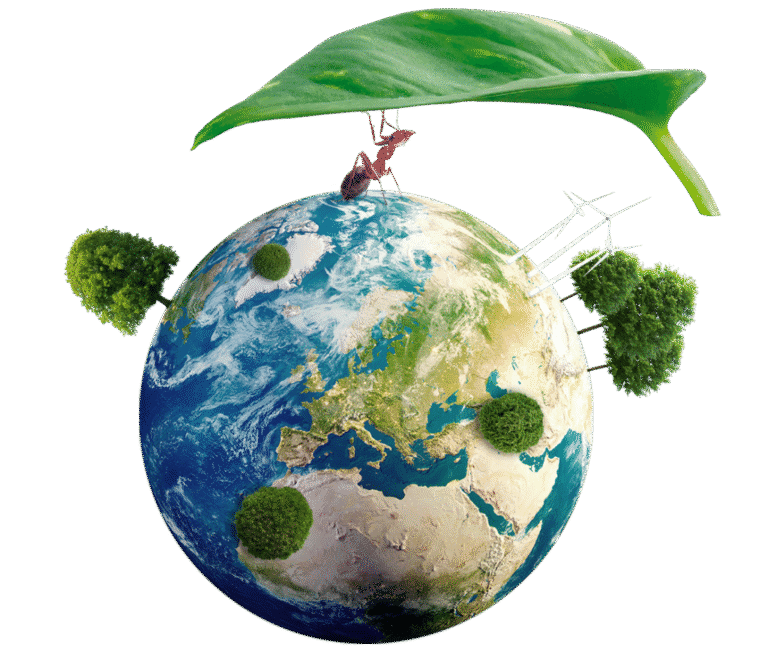
Conseils et transition
Risques pour la santé humaine liés à l'élevage industriel
L'élevage industriel est un risque majeur pour la santé humaine et il résulte d'activités négligentes et insalubres. L'un des problèmes les plus graves est la surutilisation d'antibiotiques dans le bétail, qui est répandue dans ces usines pour lutter contre les maladies dans des conditions de surpopulation et de stress. Cette utilisation intensive conduit à la formation de bactéries résistantes aux antibiotiques, qui sont ensuite transmises aux humains par contact direct avec les infectés, la consommation de produits infectés ou des sources environnementales comme l'eau et le sol. La propagation de ces « superbugs » est une menace majeure pour la santé mondiale car elle peut rendre les infections qui étaient facilement traitées dans le passé résistantes aux médicaments ou même incurables. En outre, les fermes industrielles créent également un climat parfait pour l'émergence et la propagation d'agents pathogènes zoonotiques - des maladies qui peuvent être contractées et transmises d'animaux à humains. Des germes tels que Salmonella, E. coli et Campylobacter sont les habitants des fermes industrielles sales dont la propagation augmente les chances de leur existence dans la viande, les œufs et les produits laitiers, entraînant des maladies d'origine alimentaire et des épidémies. Outre les risques microbiens, les produits animaux issus de l'élevage industriel sont souvent riches en graisses saturées et en cholestérol, provoquant plusieurs maladies chroniques telles que l'obésité, les maladies cardiovasculaires et le diabète de type 2. En outre, l'utilisation excessive d'hormones de croissance dans le bétail a suscité des inquiétudes quant à d'éventuels déséquilibres hormonaux ainsi que des effets à long terme sur la santé des humains qui consomment ces produits. La pollution environnementale causée par l'élevage industriel affecte également indirectement la santé des communautés voisines, car les déchets animaux peuvent pénétrer dans l'eau potable avec des nitrates et des bactéries dangereux, entraînant des problèmes gastro-intestinaux et d'autres problèmes de santé. Avant cela, ces dangers soulignent la nécessité de modifications immédiates dans la façon dont les aliments sont produits afin de défendre la santé publique et également de promouvoir des méthodes agricoles plus sûres et durables.
L'exploitation animale est un problème omniprésent qui a tourmenté notre société pendant des siècles. De l'utilisation des animaux pour la nourriture, les vêtements, le divertissement,...
Ces dernières années, le monde a été témoin d'une augmentation des maladies zoonotiques, avec des flambées telles que l'Ebola, le SRAS, et la plupart...
Dans la société d'aujourd'hui, il y a eu une augmentation significative du nombre d'individus adoptant un régime à base de plantes. Que ce soit...
Avec la prise de conscience croissante de l'impact négatif de nos habitudes de consommation quotidiennes sur l'environnement et le bien-être animal, éthique...
Dans le monde de la gestion du poids, il y a un afflux constant de nouveaux régimes, suppléments et programmes d'exercice promettant des résultats rapides...
En tant que société, nous avons longtemps été conseillés de consommer une alimentation équilibrée et variée pour maintenir notre santé globale...
Perspectives culturelles
Souffrance des animaux dans les fermes industrielles
L'élevage industriel repose sur une cruauté inimaginable envers les animaux, considérant ces animaux comme de simples marchandises plutôt que comme des êtres sensibles capables de ressentir de la douleur, de la peur et de la détresse. Les animaux dans ces systèmes sont maintenus dans des cages confinées avec très peu de place pour bouger, encore moins pour adopter des comportements naturels tels que paître, nicher ou socialiser. Les conditions de confinement infligent de graves souffrances physiques et psychologiques, entraînant des blessures et provoquant des états prolongés de stress chronique, avec le développement de comportements anormaux tels que l'agressivité ou l'automutilation. Le cycle de gestion reproductive involontaire pour les animaux mères est infini, et les progénitures sont séparées de leurs mères dans les heures suivant la naissance, provoquant un stress accru pour la mère et le jeune. Les veaux sont souvent isolés et élevés loin de toute interaction sociale et de tout lien avec leur mère. Des procédures douloureuses comme la coupe de la queue, le débecquage, la castration et l'écornage sont pratiquées sans anesthésie ni atténuation de la douleur, provoquant des souffrances inutiles. La sélection pour une productivité maximale - qu'il s'agisse de taux de croissance plus rapides chez les poulets ou de rendements laitiers plus élevés chez les vaches laitières - a elle-même entraîné de graves problèmes de santé très douloureux : mammite, défaillances d'organes, difformités osseuses, etc. De nombreuses espèces souffrent toute leur vie dans des environnements sales et surpeuplés, très exposés aux maladies, sans soins vétérinaires adéquats. Lorsqu'on leur refuse la lumière du soleil, l'air frais et l'espace, elles souffrent dans des conditions de type usine jusqu'au jour de l'abattage. Cette cruauté continue soulève des préoccupations éthiques, mais souligne également à quel point les opérations d'élevage industriel sont éloignées de toute obligation morale de traiter les animaux avec gentillesse et dignité.
L'exploitation animale est un problème omniprésent qui a tourmenté notre société pendant des siècles. De l'utilisation des animaux pour la nourriture, les vêtements, le divertissement,...
Avec la prise de conscience croissante de l'impact négatif de nos habitudes de consommation quotidiennes sur l'environnement et le bien-être animal, éthique...
Ces dernières années, le terme « huggeur de lapin » a été utilisé pour se moquer et rabaisser ceux qui défendent les droits des animaux...
L'océan couvre plus de 70 % de la surface de la Terre et abrite un large éventail de vie aquatique. Dans...
Le véganisme est plus qu'un simple choix alimentaire — il représente un engagement éthique et moral profond pour réduire les dommages et favoriser...
L'élevage industriel est devenu une pratique répandue, transformant la façon dont les humains interagissent avec les animaux et façonnant notre relation avec eux...
Pour la planète
Risques pour la durabilité de l'élevage industriel pour la planète
L'élevage industriel génère une quantité monumentale de risques pour la planète et l'environnement, devenant un acteur majeur de la dégradation de l'écologie et du changement climatique. Parmi les conséquences environnementales les plus marquantes de l'agriculture intensive figurent les émissions de gaz à effet de serre. L'élevage de bétail, en particulier celui de bovins, produit des quantités massives de méthane — un gaz à effet de serre intense qui retient la chaleur dans l'atmosphère de manière très efficace par rapport au dioxyde de carbone. C'est donc un autre facteur majeur contribuant au réchauffement climatique et accélérant le changement climatique. À l'échelle mondiale, le défrichement massif de terres forestières pour le pâturage ou la culture de cultures de monoculture telles que le soja et le maïs pour l'alimentation animale présente un autre aspect puissant de l'élevage industriel dans la déforestation. En plus de réduire la capacité de la planète à absorber le dioxyde de carbone, la destruction des forêts perturbe également les écosystèmes et menace la biodiversité en détruisant les habitats d'innombrables espèces. De plus, l'élevage industriel détourne des ressources en eau critiques, car tant d'eau est nécessaire pour le bétail, la culture de cultures fourragères et l'élimination des déchets. Le déversement sans discernement de déchets animaux pollue les rivières, les lacs et les eaux souterraines avec des substances nocives comme les nitrates, les phosphates et les organismes viables, entraînant une pollution de l'eau et la création de zones mortes dans les océans où la vie marine ne peut exister. Un autre problème est la dégradation des sols due à l'appauvrissement des nutriments, à l'érosion et à la désertification en raison de la surexploitation des terres pour la production de fourrage. En outre, l'utilisation intensive de pesticides et d'engrais détruit l'écosystème environnant, ce qui nuit aux pollinisateurs, à la faune et aux communautés humaines. L'élevage industriel compromet non seulement la santé de la planète Terre, mais augmente également le stress sur les ressources naturelles, se dressant ainsi sur la voie de la durabilité environnementale. Pour résoudre ces problèmes, une transition vers des systèmes alimentaires plus durables est essentielle, qui incluent des considérations éthiques pour le bien-être humain et animal et l'environnement lui-même.
À mesure que la population mondiale continue de croître, la demande de nourriture augmente également. L'une des principales sources de protéines...
Avec la prise de conscience croissante de l'impact négatif de nos habitudes de consommation quotidiennes sur l'environnement et le bien-être animal, éthique...
L'élevage est une partie centrale de la civilisation humaine depuis des milliers d'années, fournissant une source vitale de nourriture...
En tant que société, nous avons longtemps été conseillés de consommer une alimentation équilibrée et variée pour maintenir notre santé globale...
L'élevage industriel, également connu sous le nom d'agriculture industrielle, est devenu une méthode dominante de production alimentaire dans de nombreux pays autour du...
Bonjour, amis des animaux et défenseurs de l'environnement ! Aujourd'hui, nous allons plonger dans un sujet qui pourrait ne pas être...
<a i=0>Copyright © </a><a i=1 translate="no">Humane Foundation</a><a i=2>.</a><a i=3> Tous droits réservés. </a>
- Construisons ensemble un avenir compatissant et durable
- Notre foi est dans un monde où chaque créature ici est honorée avec respect et dignité, et la première lumière guide là où les gens vont. À travers le moyen de notre gouvernement, des programmes éducatifs et des partenariats stratégiques, nous avons pris en charge la cause de dire la vérité sur l'élevage industriel, comme le traitement très douloureux et cruel des animaux qui, en tant qu'animaux asservis, n'ont pas de droits et sont torturés à mort. Notre objectif principal est de fournir une éducation aux gens afin qu'ils puissent prendre des décisions sages et réellement apporter un véritable changement. La Humane Foundation est une institution à but non lucratif travaillant à présenter des solutions aux nombreux problèmes découlant de l'élevage industriel, de la durabilité, du bien-être animal et de la santé humaine, permettant ainsi aux individus d'aligner leurs comportements sur leurs valeurs morales. En produisant et en promouvant des substituts à base de plantes, en élaborant des politiques efficaces de bien-être animal et en établissant des réseaux avec des organisations similaires, nous nous efforçons avec dévotion de construire un environnement à la fois compatissant et durable.
- Humane Foundation est uni par un objectif commun — un monde où il y aura 0% d'abus d'animaux d'élevage industriel. Qu'il s'agisse d'un consommateur concerné, d'un amoureux des animaux, d'un chercheur ou d'un décideur politique, soyez notre invité dans le mouvement pour le changement. Comme une équipe, nous pouvons façonner un monde où les animaux sont traités avec gentillesse, où notre santé est une priorité et où l'environnement est préservé pour les générations futures.
- Le site web est la voie vers la connaissance des vérités réelles sur l'élevage industriel, sur l'alimentation humaine à travers d'autres options et la possibilité de se tenir au courant de nos dernières campagnes. Nous vous offrons la possibilité de vous impliquer de nombreuses manières, notamment en partageant des repas à base de plantes. Un appel à l'action consiste également à s'exprimer et à montrer que vous vous souciez de promouvoir de bonnes politiques et d'éduquer votre voisinage local sur l'importance de la durabilité. Un petit acte de mobilisation encourage les autres à faire partie du processus qui conduira le monde à un stade d'atmosphère de vie durable et à plus de compassion.
- C'est votre dévouement à la compassion et votre dynamisme qui font que le monde est meilleur et comptent le plus. Les statistiques montrent que nous sommes à un stade où nous avons le pouvoir de créer le monde de nos rêves, un monde où les animaux sont traités avec empathie, la santé humaine est à son meilleur niveau et la terre est à nouveau vibrante. Préparez-vous aux prochaines décennies de compassion, d'équité et de bonne volonté.

[1] https://en.wikipedia.org/wiki/Water_footprint#Water_footprint_of_products_(agricultural_sector)
Dans l'unité, rêvons d'un avenir où l'élevage industriel qui a fait souffrir les animaux devient une histoire dont nous pouvons parler avec le sourire, où ces mêmes animaux pleurent leur propre souffrance passée, et où la santé des individus et de la planète est l'une de nos priorités principales. L'agriculture est l'un des principaux moyens de produire nos repas dans le monde ; cependant, le système entraîne des conséquences néfastes. Par exemple, la douleur que les animaux subissent est tout simplement insupportable. Ils vivent dans des espaces exigus et surpeuplés, ce qui signifie qu'ils ne peuvent pas exprimer leurs comportements naturels et, pire encore, ils sont soumis à d'innombrables cas de douleurs atroces. L'élevage d'animaux n'est pas seulement la raison de la souffrance des animaux, mais l'environnement et la santé apparaissent également sur le radar. La surutilisation d'antibiotiques chez les bovins contribue à l'émergence de bactéries résistantes aux antibiotiques, qui constituent une menace pour la santé humaine. Les animaux comme les vaches sont également une source de pollution de l'eau en raison du rejet de produits chimiques nocifs. D'autre part, l'essor de l'agriculture animale par le biais d'activités de déforestation et le changement climatique par l'émission massive de gaz à effet de serre est le problème dominant.
Arrêtez d'exploiter la vie sur Terre.
Pour que la Terre retrouve son équilibre naturel et se remette des dommages environnementaux causés par les élevages industriels, nous devons rendre la terre à la nature et mettre fin à l'exploitation des animaux et des écosystèmes.
Références
[1] https://fr.wikipedia.org/wiki/Empreinte_eau#Empreinte_eau_des_produits_(secteur_agricole)
[2] https://wwf.panda.org/discover/knowledge_hub/where_we_work/amazon/amazon_threats/unsustainable_cattle_ranching/
[3] https://www.weforum.org/fr/stories/2019/12/agriculture-habitable-land/
https://ourworldindata.org/land-use-diets
[5] https://ourworldindata.org/data-insights/milliards-de-poulets-canards-et-porcs-sont-abatttus-pour-la-viande-chaque-année
[4] https://www.fao.org/4/a0701e/a0701e00.htm
[7] https://www.feedbusinessmea.com/2024/12/03/global-feed-industry-to-utilize-1048m-tonnes-of-grains-in-2024-25-igc/
[8] https://fr.wikipedia.org/wiki/Livestock’s_Long_Shadow#Report
[9] https://www.who.int/news/item/07-11-2017-stop-using-antibiotics-in-healthy-Animals-to-prevent-the-spread-of-antibiotic-resistance
[10] https://fr.wikipedia.org/wiki/Abattage_des_poissons#Nombres
[11] https://www.unep.org/fr/communiques/our-global-food-system-primary-driver-biodiversity-loss
[12

